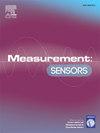Study on force transducers dynamic calibration according to sinusoidal method
Q4 Engineering
引用次数: 0
Abstract
This research aims to introduce the current progress of dynamic calibration of force transducers by sinusoidal method. The acceleration measurement by absolute method is the developing direction of sinusoidal force measurement. Besides, the influence of acceleration distribution of mass block should be taken into consideration. The size, density, and Young's modulus of the mass block affect the acceleration distribution. The study demonstrates that the uniform acceleration distribution in materials like steel and cemented carbide leads to more accurate calibration outcomes, the diameter and height of the mass block have a significant influence on the distribution of acceleration. The vibration frequency of sinusoidal force directly affects the dynamic calibration result of the sensitivity of the force sensor, and the natural frequency of standard devices of sinusoidal force calibration is affected by the mass block dramatically. Therefore, it is suggested that an international standard for dynamic calibration of force transducers based on sinusoidal methods should be formulated to resolve the differences between the relevant technical standards and the requirements of calibration items and methods for force transducers among various countries. Therefore, the unified calculation method and quantity values of dynamic calibration of force transducers according to the sinusoidal method can be achieved.
基于正弦法的力传感器动态标定研究
本文旨在介绍正弦法动态标定力传感器的研究进展。用绝对法测量加速度是正弦力测量的发展方向。此外,还应考虑质量块体加速度分布的影响。质量块的大小、密度和杨氏模量影响加速度分布。研究表明,加速度在钢、硬质合金等材料中的均匀分布使标定结果更加准确,质量块的直径和高度对加速度分布有显著影响。正弦波力的振动频率直接影响力传感器灵敏度的动态校准结果,正弦波力校准标准装置的固有频率受质量块的影响较大。因此,建议制定一项基于正弦方法的力传感器动态校准国际标准,以解决各国相关技术标准与力传感器校准项目和方法要求的差异。因此,可以根据正弦法实现力传感器动态校准的统一计算方法和量值。
本文章由计算机程序翻译,如有差异,请以英文原文为准。
求助全文
约1分钟内获得全文
求助全文
来源期刊

Measurement Sensors
Engineering-Industrial and Manufacturing Engineering
CiteScore
3.10
自引率
0.00%
发文量
184
审稿时长
56 days
 求助内容:
求助内容: 应助结果提醒方式:
应助结果提醒方式:


